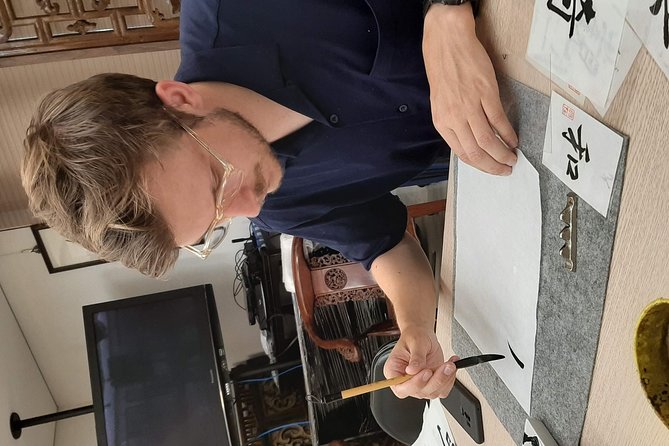If you’ve ever wondered about the art of Kumihimo, picture this: A group of friends gathers for a unique cultural experience in Japan, each eager to try their hand at the ancient braiding technique.
Stay tuned to find out how this group’s journey unfolds, revealing surprising insights into the intricacies of this traditional craft.
Key Points
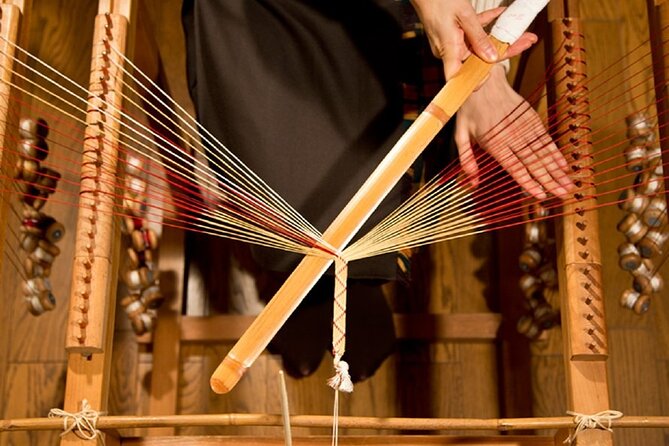
- Explore rich history and evolution of Kumihimo art in Japan.
- Learn techniques and tools like Round Disc and Tama bobbins.
- Discover cultural symbolism and significance in traditional Kumihimo patterns.
- Engage in hands-on workshops for creative design variations and modern applications.
It's also worth checking out some other tours and experiences nearby.
History of Kumihimo Artform
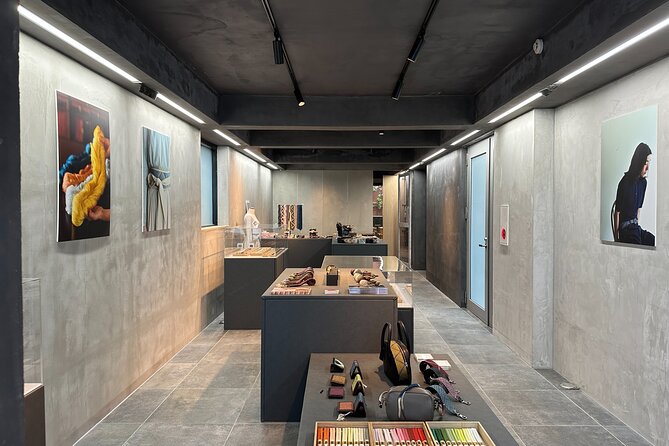
The origins of the Kumihimo artform can be traced back to ancient Japan, where intricate braiding techniques were developed for various practical and decorative purposes. Over time, the evolution of Kumihimo saw it being used not only for securing garments but also as a symbol of status and wealth.
Initially, this art form was exclusive to the noble classes, but eventually, it became more widespread among the general population. The evolution of Kumihimo also led to the incorporation of different materials like silk, cotton, and gold threads, resulting in a wide variety of designs and patterns.
Today, Kumihimo remains a popular craft, cherished for its rich history and beautiful creations.
Techniques and Tools Used
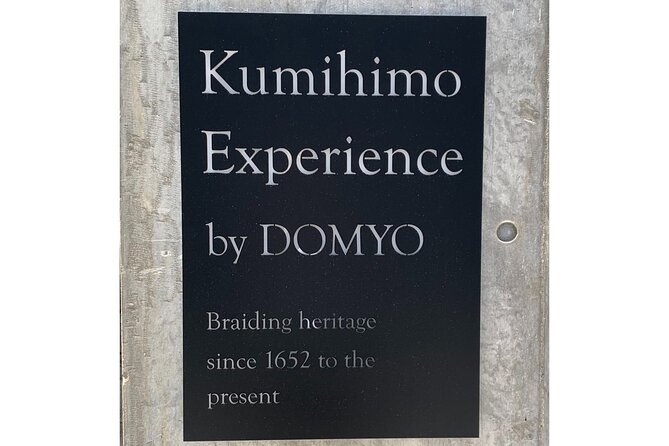
Exploring the art of Kumihimo involves mastering various braiding techniques and utilizing specialized tools. When delving into this traditional Japanese craft, individuals often find themselves enchanted by the simplicity yet intricacy of the methods and instruments involved.
Here are some key aspects to consider:
- Round Disc: A small, handheld tool that aids in creating intricate patterns.
- Marudai: A stand used for more complex braiding techniques.
- Tama: Small weighted bobbins that maintain tension in the threads.
- Silk Threads: Traditionally used materials for Kumihimo.
- Nylon and Satin Cords: Modern applications have expanded the materials used beyond silk, offering more versatility in design.
Cultural Significance and Symbolism
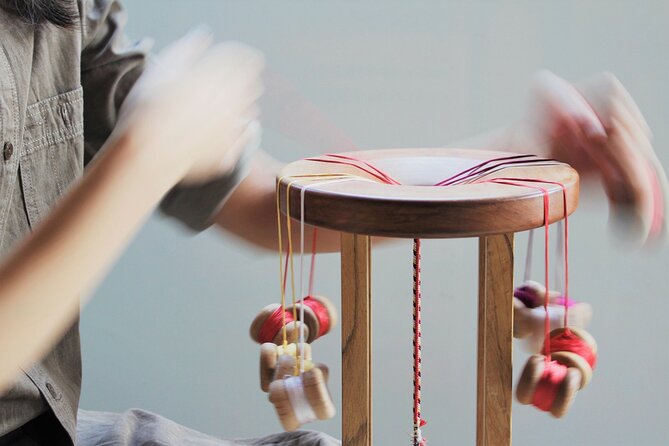
Moving on from the techniques and tools used in Kumihimo, let’s now uncover the cultural significance and symbolism woven into this traditional Japanese art form.
Kumihimo holds deep cultural significance in Japan, where it isn’t just a craft but a representation of heritage and tradition. The intricate patterns and designs created through Kumihimo are often symbolic representations of various aspects of Japanese culture, such as nature, seasons, and spirituality.
These braided cords are used in traditional clothing like kimonos, obis, and ceremonial items, highlighting their importance in Japanese customs and rituals. Each color and pattern carries meaning, making Kumihimo not just a beautiful art form but a meaningful cultural practice that has been passed down through generations.
Hands-On Kumihimo Workshop
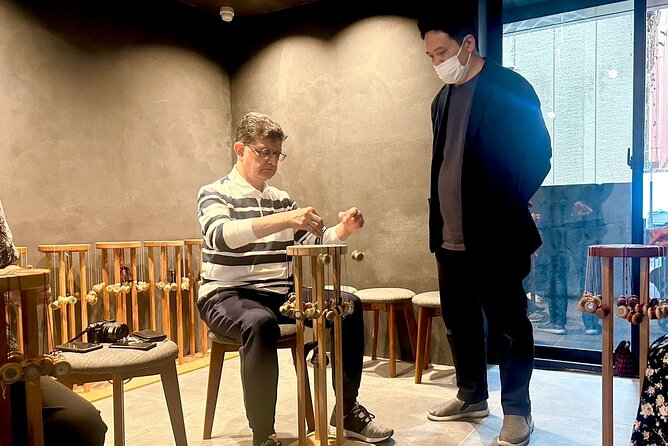
Get ready to dive into the art of Kumihimo with a hands-on workshop that lets you create your own intricate braided cords.
- Design Variations
- Modern Applications
- Learn from experienced instructors
- Explore different materials and colors
- Take home your unique creation
Kumihimo workshops offer a hands-on experience where you can discover the beauty of this ancient Japanese braiding technique. With design variations and insights into modern applications, you’ll unleash your creativity in a fun and interactive setting.
Whether you’re a beginner or have some experience, these workshops provide a great opportunity to explore the world of Kumihimo and craft something special to cherish.
Tips for Creating Kumihimo Designs
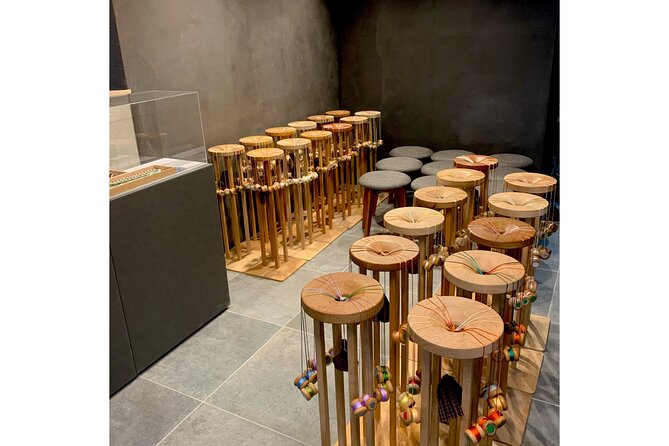
To enhance your Kumihimo designs, consider experimenting with different braid structures and color combinations for a personalized touch. Playing around with various color combinations can completely transform the look of your braid, making it unique and eye-catching. Try mixing contrasting colors for a bold statement or blending shades for a more subtle, harmonious appearance.
Plus, exploring pattern variations can add depth and complexity to your designs. You can create intricate patterns by changing the placement of strands or incorporating different types of threads. Don’t be afraid to get creative and mix things up to discover what works best for your style.
Here's a few more nearby tours and experiences we think you'll like.
Common questions

Is There a Minimum Age Requirement to Participate in the Traditional Japanese Kumihimo Artform Experience?
There’s a minimum age requirement for the workshop, following guidelines. Participants should check the specifics. It’s important to adhere to these rules to ensure everyone has a great experience.
Are There Any Specific Patterns or Designs That Beginners Should Start With in the Hands-On Workshop?
For beginners, starting with basic patterns like simple braids or diamond designs is recommended. These beginner designs help grasp the technique and build confidence before progressing to more intricate patterns in the hands-on workshop.
Can Participants Bring Their Own Materials or Tools for the Workshop?
Participants can’t bring their own materials or tools for the workshop. Tool sharing enhances the experience, encouraging creative freedom. The session focuses on custom creations using shared resources, ensuring everyone has what they need to craft beautiful kumihimo pieces.
Are There Any Restrictions on the Colors or Types of Threads That Can Be Used in Creating Kumihimo Designs?
There are no color restrictions or limitations on thread types when creating kumihimo designs. Participants can freely choose their preferred colors and thread materials to personalize their creations during the workshop experience.
Is There a Recommended Amount of Time to Dedicate to Practicing Kumihimo in Order to Improve Skills and Techniques?
To improve skills in kumihimo, one should dedicate regular practice sessions. Mastery of techniques and improvement in skills require consistent time commitment. Regular practice sessions are recommended for enhancing kumihimo skills effectively.
Not for you? Here's more of our most recent tour reviews happening neaby
- Asia Travel Esim Plan for 8 Days With 6GB High Speed Data
- [Private] Tokyo Personalized Tour (Guide Only)
- Tokyo Arrival Private Transfers From Tokyo-Narita Airport NRT to Tokyo City
- 3 Day Tokyo to Kyoto Tour (Hotels, Transport and Guide Included)!
- Private Transfer From Narita Airport to Tokyo
- Private Tokyo Tour, Build Your Own Itinerary With a Local Matched to You
- Harajuku Sweet & Culture Exploration: Dive Into Kawaii Wonders!
- Sushi Making Experience in Shinjuku, Tokyo 2 Hours
- Full-day Immersive Private Tour in Tokyo
- Transfer in Private Vehicle From Tokyo City Center to Narita Airport
- Tokyo Walking Tour With a Local Guide
- Kamata Tokyo: Culinary Delights & Local Life Adventures!
- Tokyo Tour Off-The-Beaten-Path, Shimokitazawa With a Local, Private Custom
- Tokyo to Tokyo Narita Airport (NRT) – Departure Private Transfer
- Complete Tokyo Tour in One Day! Explore All 10 Popular Sights!
Sum Up
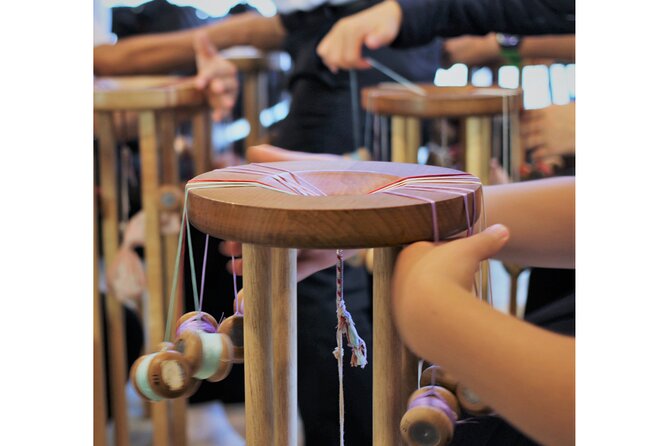
The Traditional Japanese Kumihimo Artform Experience offers a fun and educational way to learn about Japan’s rich cultural heritage.
With hands-on workshops and expert guidance, participants can create their own beautiful Kumihimo designs while gaining a deeper appreciation for the artistry and symbolism behind each braid.
Whether you’re a beginner or a seasoned crafter, this immersive experience is a budget-friendly way to connect with Japan’s artistic past and create lasting memories.
Don’t miss out on this unique opportunity to explore the world of Kumihimo!




